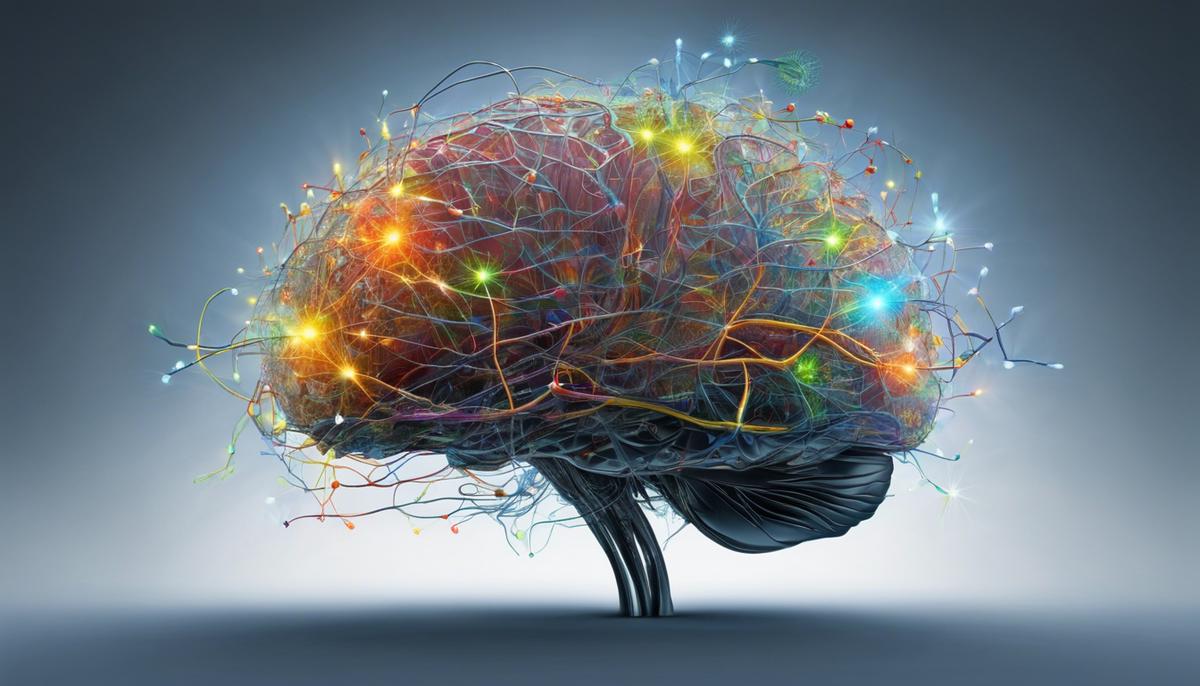Understanding the complexities of mental health is a task of immense importance and potential for societal betterment. Mental health extends beyond the mere absence of mental disorders and encapsulates emotional, psychological, and social well-being. This dynamic subject, encompassing a wide array of mental disorders, involves intricate interplays between genetics, environment, and psychobiology, subsequently shaping the thoughts, actions, and lives of those it impacts. With this perspective, our exploration of mental health commences, shedding light on various aspects including defining mental health and its many types, roles of genetics and environment, the psychopathology and pathophysiology of mental disorders, management and treatment of these disorders, and finally, the societal impact and stigma surrounding mental health.
Definition and Types of Mental Health
Understanding Mental Health: An Examination of its Diverse Categories
Mental health, a crucial component of overall wellbeing, is often misconstrued as merely the absence of mental illness. However, a comprehensive understanding calls for an acknowledgement of its intricate nature—a tapestry woven from threads of emotional, psychological, and social well-being. It’s a factor that touches every stage of life, affecting how individuals think, feel, and act, hence playing an important role in how they cope with stress, relate to others, and make decisions.
Begin with a mental illness’s definition, traditionally characterized as clinically significant behavioral or psychological syndrome that signifies a distressing disability. Mental illnesses can affect one’s thinking, feelings, mood or behavior, potentially resulting in a combination of all these. While nearly 200 classifications of mental disorders exist, they generally fall into several broad categories.
- Mood Disorders: This category, also known as affective disorders, involves persistent feelings of sadness or periods of feeling overly happy, or fluctuations from extreme happiness to extreme depression. Examples include major depressive disorder, bipolar disorder, and seasonal affective disorder (SAD).
- Anxiety Disorders: This classification encompasses disorders characterized by excessive fear, distress, or anxiety that lasts for a long time and is severe enough to interfere with daily life activities. Common anxiety disorders include generalized anxiety disorder, panic disorder, social anxiety disorder, and specific phobias.
- Schizophrenic and Other Psychotic Disorders: These are serious mental disorders causing abnormal thinking and perceptions. Symptoms include delusions, hallucinations, thought and movement disorders. Schizophrenia is a classic example within this category.
- Dementia: A general term for loss of memory, language, problem-solving and other thinking abilities that are severe enough to interfere with daily life. Alzheimer’s disease is the most common cause of progressive dementia in older adults, but there are a number of causes of dementia.
- Eating Disorders: These denote extreme disturbance or changes in a person’s eating behaviors and related thoughts and feelings. The most well-known representations are anorexia nervosa, bulimia nervosa, and binge-eating disorder.
Recognizing and understanding these varied categories of mental health provides an essential, though not exhaustive, overview to this multifaceted field. An exploration of these disorders dispels the prevailing myths surrounding mental health, enriching societal understanding and encouraging empathetic conversations about mental health. A society well-versed in mental health disorders has the power to generate rooms resonating with support rather than mere silence, encouraging medical advancements and the improvement of individual wellbeing.
Ultimately, mental health, much like physical health, necessitates care, respect, and understanding. As our knowledge of these diverse categories intensifies, so too should our commitment to cultivating environments that foster mental well-being and facilitate recovery.

Roles of Genetics and Environment in Mental Health
Unveiling the Interplay of Genetics and Environment in Mental Health
Harnessing our understanding of both our genetic blueprint and environmental stimuli is crucial in decoding the labyrinthine nature of mental health and its various disorders. This interface between our biological inheritance and life experiences frames the complexity of mental health.
The human genome is an intricate network of over 20,000 genes that not only sculpt our physical traits but also subtly influence our mental health. Robust technological advances have empowered scientists to detect and study specific genetic variations or ‘mutations’, that are more common in individuals with certain psychiatric disorders. These predispositions are meaningful if we consider mental health conditions like obsessive-compulsive disorder (OCD), schizophrenia or dementia.
For Instance, dementia, especially Alzheimer’s disease, demonstrates an explicit genetic link. Certain alterations in genes like APOE-e4 seemingly increase one’s risk of developing Alzheimer’s. However, inheriting these genetic aberrations is not an unequivocal sentence to a life with Alzheimer’s disease, but rather, amplifies the likelihood. Similarly, multiple genes are found to play a role in mood disorders such as depression and bipolar disorder.
Yet, genetic makeup is only a part of the puzzle. Remarkably, our environment and lived experiences significantly interact with these inherited tendencies to shape our mental health status. Stressful life events, trauma, or adversity may trigger a mental health disorder in a genetically predisposed individual, whilst others may sail through similar experiences unscathed.
Take the example of post-traumatic stress disorder (PTSD). This anxiety disorder frequently exhibits itself in individuals who have experienced terrifying or life-threatening events. Although genes rendering susceptibility to anxiety disorders may exist, the acquisition of PTSD fundamentally hinges upon the exposure to an environmental trauma.
Furthermore, from infancy into adulthood, other exposures such as parental nurturing, peer relationships, and educational experiences, mold our mental wellbeing. Nutritional intake, substance use, exposure to toxins, all craft an environmental narrative that crisscrosses with our genetic tale, influencing our mental health.
Acknowledging that mental health disorders are neither strictly ‘genetic’ nor purely ‘environmental’ is important. Instead, these elements fuse in a unique blend to generate an individual’s mental health landscape. The exploration of these subtle, yet profound interactions continues to be an exciting frontier in mental health research.
Shedding light on this often invisible struggle is crucial. This knowledge serves as a beacon guiding more empathic social interactions, illuminating the path to mental wellbeing, and underpinning the design of novel strategic interventions.
This grand intertwining of genetic and environmental factors underscores the depth and breadth of mental health. By acknowledging this complexity, we foster a space of understanding and empathy, allowing for improved management, intervention, and ultimately, a healthier society.

Psychopathology and Pathophysiology of Mental Health
Defining the Psychopathological Changes
Psychopathological changes are principally alterations in functioning whereby an individual’s behavior, thinking, or emotions deviate from societal norms, or cause distress either to the individual or those around them. These changes are often consistent in mental health disorders, presenting a range of symptoms from subtleties such as restlessness, inattentiveness to severe manifestations such as hallucinations in schizophrenia.
Behavioral deviations may also encompass self-harming tendencies or suicide ideation linked to conditions like depression. Cognitive aberrations like obsessions, compulsions, or racing thoughts typify conditions such as obsessive-compulsive disorder or bipolar disorder respectively. Emotional disturbances may be seen in individuals with anxiety disorders, exhibiting symptoms of incessant worry or fear.
The Neuronal Mechanisms: Pathophysiological Changes
Pathophysiological changes characterize the underlying mechanisms behind psychopathological changes. Mental health disorders are attributed to notable changes in brain anatomy, neurochemistry, and brain activity. The to-and-fro synaptic communication within brain networks is moderated by neurotransmitters, brain chemicals that transmit information. Disruptions to this delicate system can lead to mental disorders. For example, lower levels of serotonin are linked to depression.
Further, aberrations in brain structure and function have been documented in many mental health disorders. For instance, individuals with schizophrenia demonstrate irregularities in brain regions associated with cognition and emotion regulation.
Additionally, dysregulation of the body’s stress system, the hypothalamic-pituitary-adrenal (HPA) axis and its resultant increased cortisol levels has been implicated in disorders like depression and anxiety.
Impact of Psychopathological and Pathophysiological Changes: Consequences
The implications of the illustrated changes span a variety of life domains. Mental health disorders affect everything from social relationships, occupational functioning, physical health to overall quality of life. Anticipating or interpreting these changes begins with an understanding of the disease mechanisms to inform evidence-based interventions and prevention strategies.
The Dichotomy: Genetics and Environment
As previously discussed, mental health disorders are complex conditions arising from an intricate interplay of genetic and environmental factors. This dichotomy holds that while genetic susceptibilities lay the foundation for mental disorders, environmental factors often act as the catalyst triggering their onset.
Interventions and Future Directions
Realizing the potential of genetic research, researchers now engage in genome-wide association studies that hold promise for revealing genetic variations associated with mental health disorders. Advancements in neuroimaging have allowed us an unprecedented insight into the brain’s functioning, offering potential biomarkers for mental health disorders. This, combined with improving therapeutic interventions, can lead toward more personalized treatment strategies, priming the path for preventive psychiatry.
In conclusion, understanding the psychopathological and pathophysiological changes associated with mental disorders is paramount. This understanding allows for the development of effective interventions and aids in distorting societal misconceptions, fostering a more informed and empathetic society. A rich, multi-dimensional perspective of mental health disorders, both genetic and environmental, could herald a new age in mental health understanding, treatment, and, importantly, prevention.

Management and Treatment of Mental Health Disorders
Transitioning into the topic of managing and treating these intricate mental health disorders may at first seem overwhelming. However, a wealth of knowledge exists that points to effective strategies and treatments, all with the potential to dramatically improve quality of life for those affected.
Psychotherapy, often termed as ‘talk therapy,’ features prominently in successful strategies for management of mental health disorders. This modality allows individuals to explore their thoughts and emotions in a safe, supportive environment. Diverse approaches, including cognitive-behavioral therapy, interpersonal therapy, and psychodynamic therapy, allow treatment plans to be tailored to the needs of the individual. Each approach carries a distinct focus – be it reshaping harmful thought patterns, strengthening social relationships or unearthing subconscious mechanisms – thus indicating the importance of quality diagnosis in treatment efficacy.
Pharmacotherapy, or medication-based treatment, also holds a critical role. Selective serotonin reuptake inhibitors (SSRIs), serotonin and norepinephrine reuptake inhibitors (SNRIs), and atypical antipsychotics are just a sampling of the numerous classes of medications used to treat mental health disorders. These drugs work by altering the balance of neurotransmitters in the brain, thereby affecting mood and behavior. As with psychotherapy, effective use of pharmacotherapy relies on precise, individualized diagnosis and treatment planning.
A wave of interest has arisen in recent years around the contribution of lifestyle modifications to mental health management. Regular physical activity, balanced diet, adequate sleep, and mindfulness practices such as meditation have all been shown to promote mental well-being. While not standalone treatments for mental health disorders, these lifestyle adjustments can significantly enhance traditional therapy and pharmacotherapy outcomes.
Emerging in the field is the role of neuromodulation therapies, particularly for treatment-resistant conditions. Deep brain stimulation, transcranial magnetic stimulation (TMS), and electroconvulsive therapy (ECT), represent just some of the techniques employed. These therapies target specific brain areas, altering neuronal function and offering hope in complex cases.
Psychosocial interventions equally deserve mention, addressing the societal, familial, and environmental context in which mental health disorders operate. Support groups, vocational rehabilitation, family-focused therapy, and peer support services offer tangible assistance and foster a supportive, understanding community.
Lastly, early detection strategies offer the potential to halt the progression of mental health disorders before they fully develop. School-based mental health programs, regular screenings in primary care settings, and public awareness campaigns all contribute to early identification and intervention, highlighting the importance of a proactive approach to mental health.
Incidentally, a combination of these treatment avenues often leads to the most successful outcomes. The interplay between biological, psychological, and social factors in mental health necessitates adroitly tailored, multidimensional treatment strategies. This further emphasizes the importance of cohesive, collaborative care teams in navigating the complexities of mental health disorder management.
Indeed, the pursuit of understanding mental health disorders and their effective treatment demands ongoing exploration, empathy, and assurance. It remains a testament to the sheer complexity of the human mind, and to the astounding capacity of scientific inquiry to reveal its deepest workings. This journey of discovery not only improves lives but inherently enriches our collective human experience.

The societal Impact and stigma around Mental Health
Note: The guidelines also emphasize not repeating any of the previous material. Hence, the article will present fresh contents focused on the focal topic.
Moving forward, it is paramount to address the societal implications of mental health disorders and to unravel the influence of stigmatization on these issues. The reverberating societal effects of mental health disorders cannot be overstressed. The ripples extend well beyond individuals directly affected to pierce community fabrics, casting long shadows on societal structures and operations.
The consecutive costs, both economic and social are far-reaching. Economically, nations are beleaguered by mounting healthcare costs and indirect costs pertaining to diminished work productivity and, on a more personal level, loss of income or educational attainment. From an annual global cost of $ 2.5 trillion in 2010, expectations rise to $ 6 trillion by 2030 as per World Economic Forum and Harvard School of Public Health.
There is a social dimension too. Mental health disorders can corrode social relationships, often leading to isolation and exclusion from community activities. It is evident in variegated aspects such as lower marriage rates, higher divorce rates, and reduced social interactions among individuals with severe mental health disorders. These implications underscore the societal magnitude of mental health disorders.
The presence of mental health stigma, however, exacerbates this issue. Enveloped in the garb of misconceptions, prejudices, and discriminatory behavior, stigma entrenches societal hurdles and personal challenges for individuals with mental health disorders. Public stigma festers negative attitudes leading to social distance, whereas self-stigma generates lower self-esteem and life satisfaction. The conspicuous absence of adequate support systems further propels the individual into a vicious cycle of alienation and disease progression.
Stigma does not discriminate; it spans across all societal quarters. Employment prospects for individuals with mental disorders are compromised due to employer discrimination and self-limiting behaviors. Healthcare providers, despite their role in the mental health arena, are not immune to harboring stigmatizing beliefs. This often leads to sub-optimal healthcare delivery and reinforces derogatory social stereotypes.
The repercussions extend into the broader societal sphere. Stigma, as research indicates, is a formidable obstacle to seeking mental health services, often resulting in delayed or altogether avoided treatment. This delay triggers an escalation of symptoms, leading to worsening general health, increasing burden on families, and a further erosion of social life.
Educating oneself about mental health, however, can initiate a wave of change. Knowledge illuminates the path to prompt treatment, optimal healthcare, and a better quality of life. As awareness disseminates, stigma attenuates, facilitating societal integration and underpinning broader societal benefits.
Initiatives countering stigma need to be multileveled, involving patients, families, healthcare providers, institutions, and communities. Governmental legislation can safeguard against discrimination and ensure parity in mental health services. A robust framework incorporating mental health education, patient rights, and community support can truly amplify societal empathy and inclusivity.
Society’s role is not just care, but also to respect dignity and uphold equality. Only then can the world witness a revolutionary shift in mental health perspectives and facilitate holistic well-being for all individuals. Alongside continued progress in our scientific understanding, it is our moral, ethical, and social obligation to eradicate the unseen barriers of stigma and navigate towards a future of acceptance and empathy.

The discourse around mental health is a vital one, woven inextricably into the fabric of our society, echoing in lives touched by mental health disorders. By delving deep into the characteristics and causal links of mental health, we illuminate areas so often shrouded in misconceptions, fear, and stigma. Shedding light on the treatment and management techniques, we can initiate honest, empathetic, and informed discussions. It is these rich, informed conversations that can encourage broader societal acceptance, combat stigma, and ultimately foster better outcomes and quality of life for individuals grappling with mental health issues. Recognizing the interplay of genetics, environment, and psychopathology elucidates the complexity of mental health, and it’s not just a private but a societal concern that requires collective understanding, acceptance, and action.

One thought on “Understanding Mental Health: Comprehensive Insights”